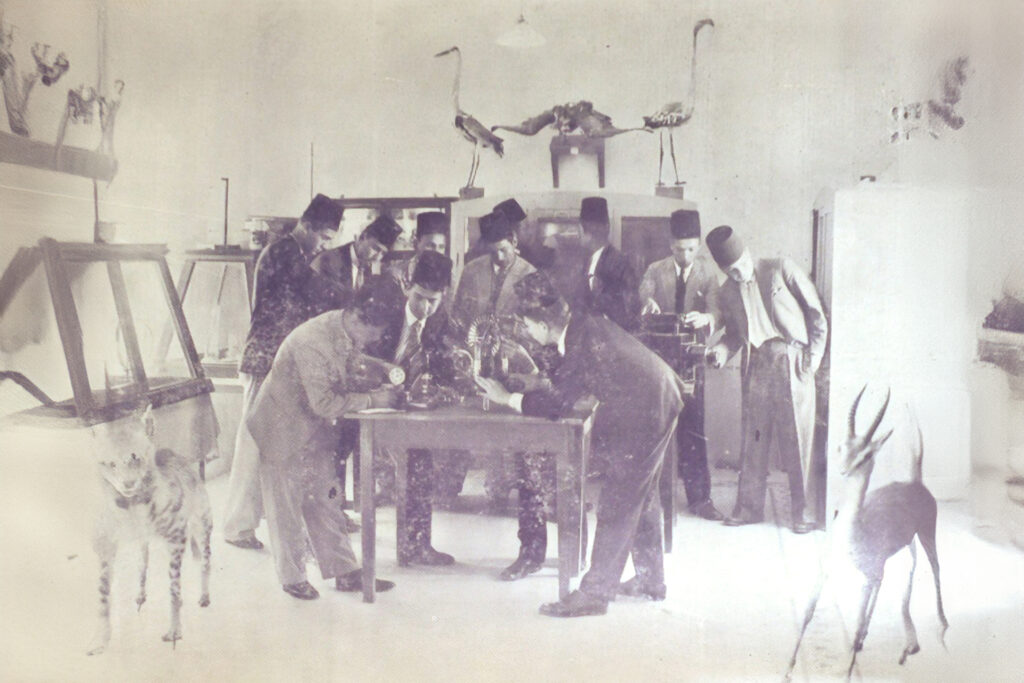It was founded by Sheikh Muhammad Suleiman Al-Saleh in Jerusalem in 1906. It relied on the Arabic language in teaching, at a time when education in Jerusalem was limited to schools that relied on the Turkish language as the primary language during the era of the Ottoman Empire, and others that relied on foreign languages.
Rawdat Al Maaref National College developed curricula with a national, Arab and Islamic orientation, and after its transformation into a college, it advanced the city in the fields of culture, art, sports and science.
the site
Rawdat al-Ma’arif was located in Old Jerusalem, and its buildings extended to the northwestern wall of Al-Aqsa Mosque between the Al-Ghawanimah and Faisal Gates.
Establishment
Al-Ma’arif Kindergarten was established at a time when the official national schools in Palestine were few in number. It was considered the first Islamic school in Jerusalem, and it had cultural, national, and religious orientations.
She imported her books from libraries in Egypt, the United States of America, and Britain, and she also sent her students on trips to Egypt to learn about its civilization, antiquities, arts, and sciences.
Founders
Sheikh Muhammad Suleiman Al-Saleh is considered its first founder, in cooperation with the Supreme Islamic Council in Jerusalem. Sheikh Hassan Abu Saud, Ishaq Darwish, Abdul Latif Al-Husseini, and Munif Al-Hussein participated in its founding, all of whom are religious and national authorities.
Its importance
The school contained a physics and chemistry laboratory that included modern machines and tools imported from Germany. It was the first Palestinian national school to be lit by electricity, and to have spring water piped to it.
It was also the first school to use radio in education, as well as the first school to have an astronomical observatory to measure temperature and the amount of rain in millimeters according to the months of the year.
In addition, it was the first to introduce the sport of football to Palestinian schools, as it witnessed the establishment of the “Kindergarten Al-Maaref” team in 1908, and held matches between its students and students of schools in Lebanon and Egypt. It was also the first to introduce scouts to Palestinian schools in 1911.
Rawdat Al Maaref Magazine
In 1922, the school issued a monthly magazine known as “Rawdat al-Ma’arif Magazine,” which carried scientific, literary, educational, and nationalistic orientations. Its director was Mr. Fayez Younis al-Husseini, and its editorial committee was named “The Scientific Committee for Students of Rawdat al-Maaref National School.”
The first issue of the magazine, which adopted the slogan “Seeking knowledge is obligatory for every Muslim man and woman,” was printed in January 1922, at the Orphanage Press in Jerusalem.
Among the contributors to publishing and writing in the magazine were a number of Palestinian and Arab professors, such as: Mahdi Allam, Ahmed Deif, Abdul Wahab Al-Najjar, Muhammad Khalaf Allah, Muhammad Bey Al-Shara’i, William Vandyke, Muhammad Ahmed Jad Al-Mawli, Muhammad Al-Ahmadi Al-Zawahiri, and Abdul Aziz Al-Tha’alabi.

Facilities and their uses
The school contained a large hall that the Mufti of Jerusalem, Haj Amin al-Husseini, used as a rhetorical platform, and in it the most important conferences, meetings, and lectures were held, including the First Islamic Conference in 1932.
Among those who attended, visited, or were commemorated in the hall were King Hussein bin Talal, his son King Abdullah II, King Faisal I, Prince Saud bin King Abdulaziz Al Saud, Indian leader Shawkat Ali, Prime Minister of Iraq Abdul Mohsen Bey Al-Saadoun, and President The Syrian Shukri Al-Quwatli, Musa Kazem Pasha Al-Husseini, the poets Ahmed Shawqi and Ibrahim Abdul Qadir Al-Mazni, the writer Ahmed Amin, and the journalist Muhammad Hassanein Heikal.
The school contained two libraries that included ancient and modern scientific, literary, and historical books in Arabic and English. It had a mosque and a theater that witnessed rhetorical, literary, and poetic debates, in addition to a children’s garden, sections for the primary stage and others for the secondary stage, and it also included a boarding section.
End of school
With the outbreak of the Great Palestinian Revolt in 1936, the British Mandate authorities occupied the school buildings, used it as a police station, and expelled the students and educational staff who decided to continue the march in the house of the freedom fighter Musa Kazem Al-Husseini in Bab Al-Sahira, located on the northern side of the Jerusalem Wall, and the school’s work continued. Until the Nakba in 1948.
Later, the original school building was transformed into the Omariya School.

